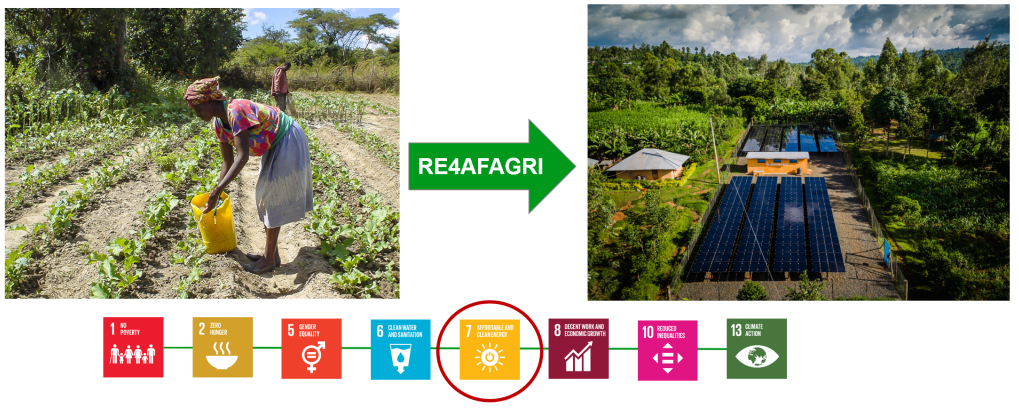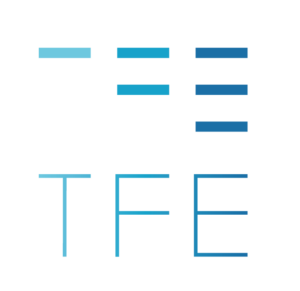TFE – Renewable Energy for African Agriculture
Description
- Location of project: Nigeria, Rwanda, Zambia, Zimbabwe
- Completion date: January 2024
The Company
About TFE:
Based in Cape Town, TFE is a specialised distributed renewable energy (DRE) market intelligence and finance consultancy. We bring a combined 30 years of practical experience in designing and delivering innovative DRE business and financial models, electrification strategies, market assessments and investment advisory in the challenging context of frontier markets. We work with the entire cross-section of stakeholders; multi-national, national and local, including development finance institutions, local non-governmental groups, practitioners and end-users themselves. Our consulting experience spans more than 20 countries across Sub-saharan Africa and Southeast Asia. Learn more and get in touch at www.tfe.energy.
About IIASA:
IIASA is an international research institute that advances systems analysis and applies its research methods to identify policy solutions to reduce human footprints, enhance the resilience of natural and socioeconomic systems, and help achieve the Sustainable Development Goals. Through its research programs and initiatives, the institute conducts policy-oriented research into issues that are too large or complex to be solved by a single country or academic discipline. This includes pressing concerns that affect the future of all of humanity, such as climate change, energy security, population aging, and sustainable development. The results of IIASA research and the expertise of its researchers are made available to policymakers in countries around the world to help them produce effective, science-based policies that will enable them to face these challenges.
The Challenge
Electrification rates are not nearly sufficient if we hope to meet Sustainable Development Goal 7 of universal electrification. Something is not working and smallholder farmers are being left behind. Responsible for 80% of sub-Saharan Africa’s agricultural output, smallholder farmers are the breadbasket of the region. Yet, despite this critically important role, these farmers are largely neglected, often living outside the reach of critical infrastructure. Electricity, which plays a vital role in agricultural productivity, remains especially elusive. In these rural areas only 29% of the population has access to electricity and of these, 80% are smallholder farmers. Electrification is simply not happening fast enough and these populations are being unfairly left behind. Accelerating the pace of electrification and balancing these inequalities requires a fundamental shift in how electrification interventions, especially those in rural areas, are designed and implemented.
The Renewable Energy for African Agriculture (RE4AFAGRI) project, a joint initiative between TFE Africa, the International Institute for Applied Systems Analysis (IIASA), HEAS AG, the University of Cape Town and Politecnico di Torino, recently published a new integrated planning tool designed to increase the success rates of agricultural electrification interventions in sub-Saharan Africa. The initiative has been designed from the outset to develop a set of tools that brings together the cutting edge of modelling and geospatial technologies with deep experience of how businesses in rural Africa really work. Funded by the European Commission as part of the LEAP-RE programme, it combines modeling tools for informed policymaking with tools for identifying high potential electrification sites and assessing financial viability of electrifying specific smallholder irrigation and agro-processing activities such as grain grinding, threshing and drying.
Project Financing and Costs
The project was funded by the European Commission as part of the Long-Term Joint Research and Innovation Partnership on Renewable Energy (LEAP-RE) between the European Union and the African Union.
Project Outcome
Open-source outputs from the project, as outlined below, are available on the RE4AFAGRI website: www.re4afagri.africa.
Integrated nexus model:
The RE4AFAGRI platform is a multi-model framework to analyse deficits, requirements, and optimal solutions for development links between land, water, agriculture and energy in developing countries. The platform integrates four standalone peer-reviewed modelling tools:
- An evapotranspiration model to estimate crop water demands by source;
- A geospatial data processing platform to estimate electricity demand in energy-poor communities;
- Geospatial-based optimization to support electrification planning and decision making to support energy access goals; and
- A modeling platform that integrates optimised resource use across energy, water and land spheres at various scales with distributed hydrological modeling. This provides insights into the future vulnerability of water, energy and land resources and how multi-sectoral policies, technological solutions and investments can improve the resilience and sustainability of transformation pathways.
Together, these tools enable policymakers, investors and practitioners to manage the interlinkages between water, energy, food, environment and economic development, which in turn enables infrastructure development tailored to local socio-cultural, cultural and financial needs. To access the integrated nexus model, click here.
Techno-economic model:
The full suite of tools also includes a user-friendly techno-economic model that determines the financial viability of irrigation and agro-processing equipment uptake among smallholder farmers. It places smallholder farmers at the center, assessing the financial viability of acquiring productive use equipment (solar water pumps and agro-processing equipment) from the perspective of the farmer and determining the suitability of different off-grid DRE technologies (standalone solar and mini-grids) in powering these appliances. The model has been pre-populated with data from four case study countries (Nigeria, Rwanda, Zambia and Zimbabwe), but users can customise by inserting data from their own countries to assess the financial viability of their irrigation or agro-processing project. To access the model, click here.
Business model designs:
A parallel report builds on the output of the model to outline mini-grid and off-grid solar business models tailored to the needs and context of smallholder farmers in the project’s case study countries, including pay-as-you-go services, appliance financing approaches and community-centred models. Where and how these business models are implemented are also of critical importance, so as case studies, the macro operating environments of Nigeria, Rwanda, Zambia and Zimbabwe were assessed to determine the extent to which they support or hinder implementation. From these findings, the research team outlined recommendations for how to make these environments more favourable for organisations that are tasked with implementing business models – mini-grid and standalone solar companies. These include, for example, increased funding support and lower taxation of renewable energy components. To access the report, click here.


